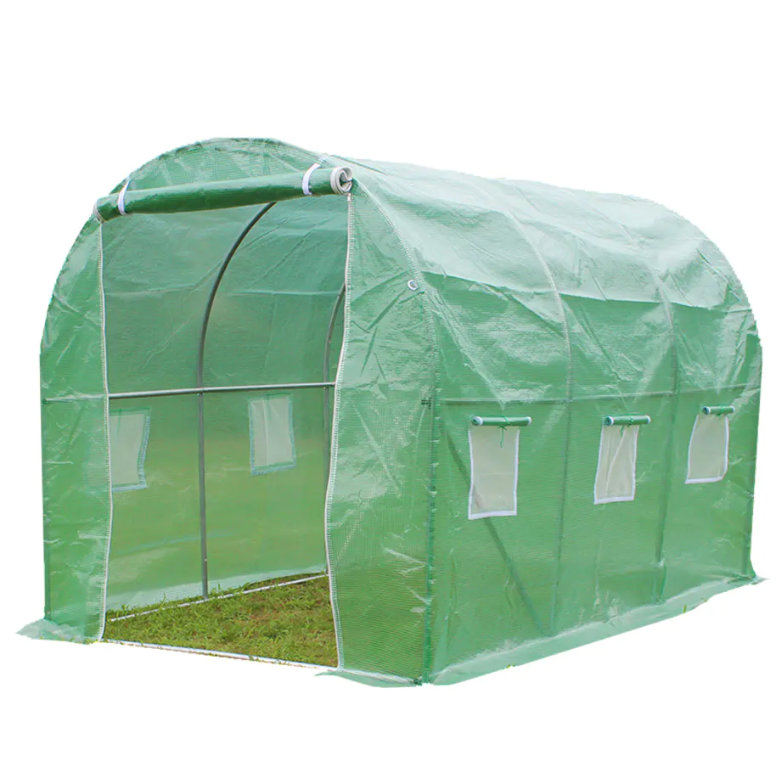Designing a Strong and Durable Foundation for Outdoor Tool Sheds

Why Is a Proper Foundation Essential for a Tool Storage Shed?
A tool storage shed requires a well-designed foundation because the base directly affects its long-term stability and load-bearing performance. A solid foundation distributes weight evenly across the ground, reducing the risk of sinking, tilting, or structural deformation. It also prevents moisture from wicking upward into the floor, which is crucial for both wooden and metal structures. When the foundation is not properly planned, seasonal soil movement, heavy tool loads, and water accumulation can gradually compromise the shed’s structural integrity and shorten its service life.
How Should the Ground Be Prepared Before Laying the Foundation?
Preparing the site is the first and most important step in foundation construction. The ground must be cleared of grass, roots, stones, and loose debris to ensure a flat and compactable surface. After clearing, the soil should be leveled using basic surveying tools, ensuring no high or low spots remain. Packing the soil with a tamper increases density and decreases the risk of uneven settlement. If the area is prone to water pooling, additional grading is necessary to create gentle slopes that direct rainwater away from the structure. In some environments, installing a gravel layer beneath the framework helps improve drainage and limit soil softening during wet seasons.
What Foundation Types Offer the Best Stability and Load-Bearing Capacity?
Several foundation options can be used depending on soil conditions, climate, and shed size. A gravel pad is one of the most common choices because it offers excellent drainage and prevents moisture buildup beneath the floor. It consists of compacted layers of crushed stone that create a permeable yet supportive base. For heavier sheds or locations requiring strong wind resistance, concrete slab foundations deliver superior load capacity and long-term stability. A poured concrete slab provides a seamless surface that resists shifting and supports the weight of heavy equipment without risk of floor deformation. Another practical option is the concrete pier or block foundation, which elevates the shed above ground level, improving ventilation and reducing exposure to soil moisture.
How Can Structural Reinforcement Improve Long-Term Performance?
Proper reinforcement further enhances the durability of a shed’s foundation. For concrete slabs, rebar grids or welded wire mesh help prevent cracking from temperature changes and load stress. In gravel foundations, pressure-treated wooden frames or steel edging keep the stone in place and maintain shape over time. Anchoring systems are also critical, especially in areas with strong winds. Ground anchors, embedded bolts, or concrete-set brackets ensure that the structure remains securely fastened to the foundation and avoids shifting or lifting during storms. Adding perimeter support beams under the shed’s floor also improves load distribution and reduces the likelihood of sagging floors as heavy tools accumulate.
Why Is Drainage a Key Factor in Foundation Design?
Effective drainage is essential for preventing long-term structural issues. Standing water softens soil, accelerates rot in wooden floors, and increases corrosion risk for metal parts. Incorporating a thick gravel layer, installing drainage pipes, or elevating the shed slightly above ground level allows water to flow away instead of accumulating. In regions with heavy rainfall, a French drain system or perimeter trench backing helps maintain dry soil conditions around the shed. Keeping the foundation well-drained significantly extends the life of the entire structure and reduces the frequency of maintenance.
Conclusion: How to Build a Stable, Long-Lasting Foundation?
Ensuring stability and load capacity for an outdoor tool storage shed begins with thoughtful planning and proper foundation construction. Careful ground preparation, selecting the right foundation type, and reinforcing key structural elements work together to create a solid base that withstands weather, heavy loads, and long-term use. With proper drainage and anchoring systems in place, the shed remains stable, level, and durable for many years. Whether storing small hand tools or larger power equipment, a well-designed foundation is the most critical factor in maintaining long-term reliability and structural integrity.
- Art
- Causes
- Crafts
- Dance
- Drinks
- Film
- Fitness
- Food
- Jeux
- Gardening
- Health
- Domicile
- Literature
- Music
- Networking
- Autre
- Party
- Religion
- Shopping
- Sports
- Theater
- Wellness



